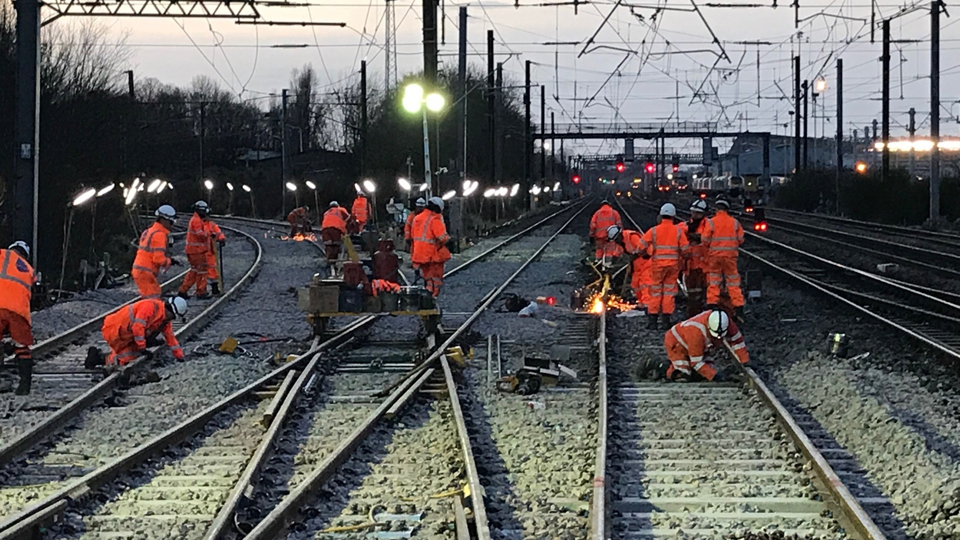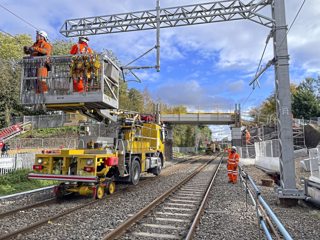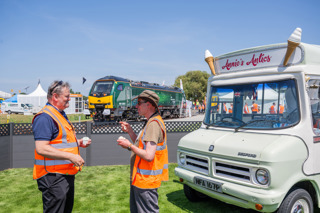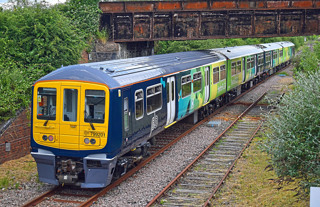Separate Commons committee reports reveal the railway to-do list that hasn’t been moved forward by the Department for Transport, and which an incoming government will now have to tackle, says Philip Haigh.
Looking up the word dither in a thesaurus gives several alternatives: faff about, falter, haver, hesitate, oscillate, shillyshally, swither, teeter, vacillate, waver.
All splendid words - and all fit to be applied to the Department for Transport for the way it has overseen (or not) the rail network over the past five years.
There’s an exception in the way the DfT moved quickly in spring 2020 to secure passenger rail services, as the COVID pandemic struck. But it had no choice, in that the government was telling people to stay at home, so trains became deserted overnight.
The alternative would have been to close down services. Who knows how long it might then have taken to restore them, had route and traction knowledge expired. The DfT made the only choice it could.
Beyond this, a report from the Public Accounts Committee, published on May 27, accurately summarises the last few years: “It has been six years since the Department identified the need for a root and branch review of the railway, but it has achieved very little in this time.”
Meanwhile, the Transport Select Committee published its final report on May 28, suggesting that the next government would “inherit an already long to-do list” - headed by rail reform, but also including clarity around future rail infrastructure investment.
Both reports appeared in the final days of the 2019-24 Parliament, a few days after the Prime Minister stood in the pouring rain to announce July 4’s General Election.
As parting shots go, the PAC’s is powerful, with its report saying “there has been too little focus on passengers and taxpayers” and accusing the DfT of failing “to resolve fundamental disagreements and clarify key aspects of reform”.
Both committees criticise the lack of progress on making transport accessible.
The TSC described the “all-pervasive nature of transport inaccessibility across all modes and the profoundly negative impact it has on daily life for disabled people”.
The PAC reported that the DfT has pledged a consultation about national rail accessibility, but adds: “It should already have enough information about the current condition of stations… to start tackling problems now and without further delay.”
Taken together, the reports do not reflect well on the DfT, whose work has been directed recently by Transport Secretary Mark Harper and Rail Minister Huw Merriman.
They and their predecessors have raised rail fares while cutting fuel duty for road users. They have presided over HS2’s dismembering while suggesting there is a war on motorists. They have ignored repeated calls for foresight in infrastructure planning (the supposedly annual Rail Network Enhancements Pipeline that has been published just once - in 2019). And they have made pitiful progress with rail reform.
On the plus side, East West Rail’s central section has been built (but sadly without electrification), and the Northumberland Line is about to reopen to passengers, reversing a Beeching closure from the 1960s. (Part of) HS2 is being built. And we’re finally seeing progress with upgrading the main trans-Pennine route between Leeds and Manchester.
July 5 will very likely see a new ministerial team in the DfT. Huw Merriman has stood down from Parliament, so there will certainly be a new rail minister even if the Conservatives retain power. But all the opinion polls suggest it will be Labour that walks into Downing Street to take control and appoint ministers.
Like the Conservatives, Labour is committed to creating Great British Railways as an independent, state-owned body to oversee rail operations on ministers’ behalf.
The PAC report explains: “Unresolved issues remain regarding the extent of GBR’s role and responsibilities, including the level of independence and ability it will have to be a ‘guiding mind’ for the railways; the future commercial model between GBR and commercial operators; and how fares would be set.”
This is ground with which many railway historians are familiar.
When Labour took power in a landslide election on July 4 1945, it wrestled with the problem of railway companies facing a backlog of wartime repairs amid rising costs and competition from other modes.
Its answer was nationalisation of transport across rail, road and canals. But should this be based on function, territory or region? It decided on functional nationalisation, which left each mode independent and cut the chances of integration.
Thus government passed the Transport Act 1947, to create the British Transport Commission to set overall policy, with five executive boards reporting to it. They covered rail, road, inland ports and waterways, London Transport, and hotels.
As Terry Gourvish notes in his comprehensive account, British Railways 1948-73 A Business History, the ‘Big 4’ rail companies would have preferred a territorial or a regional solution. He particularly notes their opposition to losing control of their docks and harbours. (There’s an interesting aside to consider how Southampton Docks, for example, might have developed had it remained in railway hands, given today’s emphasis on moving shipping containers by rail.)
Gourvish leaves readers with a strong feeling that the Labour’s post-war government made decisions based on ease.
He notes: “What mattered was political and administrative expediency. Discussion of the implications of the legislation for the economic operation of road and rail transport was conspicuously absent. Economies were expected after the creation of the Commission and the introduction of ‘co-ordination’ but, as in 1921, these were only vague assumptions. They were not based on detailed investigation.”
He goes on to say that the government’s choice of creating a commission and executives came in full knowledge that it would make it harder to produce the co-ordination it wanted. The mention of 1921 refers to that year’s parliamentary act that created the ‘Big 4’ - LNER, LMS, GWR and Southern - from 123 constituent companies in 1923.
That 1921 act rejected outright nationalisation, but in creating larger regulated businesses, Gourvish says it “marked the end of the government’s faith in inter-railway competition as a protection for consumers”.
There are parallels with today. We’re coming to an end of a period of competition. This competition has been misunderstood since the early days of privatisation in the 1990s. Passengers might have expected to choose between operators, just as someone flying from London to New York might choose between airlines. Yet rail passengers travelling from London to Manchester have little choice but (currently) Avanti West Coast.
Rail competition has been largely for the market, rather than in the market. So, FirstGroup beat Virgin/Stagecoach to the deal to operate trains between London and Manchester.
Labour will extinguish competition. Its policy is to bring private passenger contracts under GBR as they expire, nationalising English train operations.
But there’s little detail on how Labour would then want GBR to run them. At 28 pages, its April 25 document has far less detail than its 2020 proposal that ran to 103 pages.
The April version talks about the future Transport Secretary setting “clear strategic direction” with targets for modal shift, and the prospect of “huge reductions in emissions” by making public transport “more reliable and attractive”.
Back in 2020, that more comprehensive Labour document noted research that suggested a need to cut car mileage by between 20% and 60% by 2035, in order to meet climate change temperature targets.
It suggested: “Such a large and rapid shift is only conceivable with a totally transformed public transport offer - an offer that gives people real options to travel conveniently and efficiently by other means.”
We’re yet to see how demanding Labour’s modal shift target might be. It hints at, but doesn’t make explicit, an emphasis on rail as a public service. In turn, this suggests that provision of services ranks more highly than demand for them. What will be the balance between public and commercial services? The balance between useful and popular?
The next government will also have union disputes to settle - not least the continuing drivers’ strikes, but also whatever changes come from pursuing industry reform.
The PAC’s final report suggests that DfT’s failure to engage with rail workers means that it risks “not having a full understanding of the challenges and practical realities faced by the staff on the ground responsible for implementing the reforms”.
Labour says it will end the “politicised, adversarial approach to industrial relations”, and that GBR will foster “more productive relationships with rail workers and their trade unions”.
The first big test will come in how the next ministers handle reform. Will they opt for top-down direction driven by their external think tanks, or ask GBR to explain different options and implications and then decide?
To read Philip Haigh's column every fortnight, subscribe to RAIL and never miss an issue.



















Login to comment
Comments
No comments have been made yet.